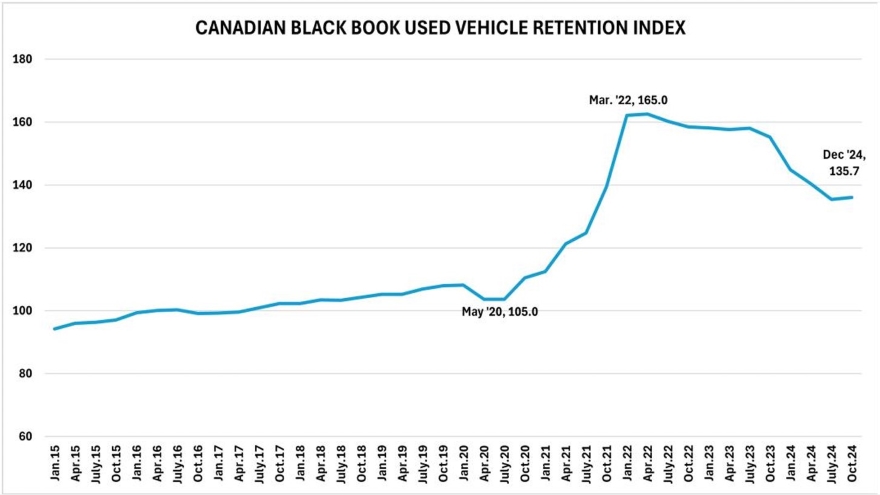
In a car market where consumers are extremely sensitive to prices, the addition of a 25 per cent universal export tariff could have a distorting effect, according to an auto sector analyst.
U.S. President Donald Trump has threatened to slap Canada and Mexico with such a tariff as early as Saturday.
“If that happens, expect to see some changes in the market for sure,” said Baris Akyurek, AutoTrader’s vice-president of insights and intelligence. AutoTrader is Canada’s largest online automotive marketplace for new and used cars.
“Demand will shift from new to used with the significant price increases that tariffs would likely bring. We think of the two separately, but they really go hand-in-hand.”
With new car prices expected to climb and consumers’ car-buying strategies expected to change, Akyurek said the used car market will also see rising prices as demand increases.
Though he doesn’t expect used vehicle prices will skyrocket, as they did during COVID, the principles of supply and demand remain in play.
“Right now the used inventory is healthy, but it isn’t as big as it was a year ago,” Akyurek said.
“We’re starting to see the impact of the loss of production during the pandemic. Tariffs will also push consumers to look more to the used car market when supply is becoming tighter.”

That shift in consumer focus will have a ripple effect on new car sales.
Unlike during COVID, when supply chain shortages significantly reduced the volume of new car production, it will be tariff-inflated prices that will force a reduced demand.
He said some manufacturers (OEMs) may offer incentives, much like Hyundai and General Motors did recently for Canadian electric car buyers who got caught by the sudden elimination of the $5,000 federal EV incentive.
“I think a few OEMs will do something, like incentives or interest rate reductions, in the short term,” Akyurek said.
“That won’t be a long-term solution. That won’t make sense on the balance sheet.”
Consumers may also alter their perception of what automakers they consider domestic manufacturers, or make a political point with their purchases, Akyurek added.
Toyota and Honda both have substantial assembly operations in Ontario and rank first and third in Canada in vehicle production. Ford in the nation’s No. 2 vehicle manufacturer.
Stellantis remains the largest employer of automotive workers in Canada and is expected to add a third shift later this year at its Windsor Assembly Plant.
Akyurek said Auto Traders’ research has found consumers’ brand loyalty isn’t strong and buyers are willing to look at other options.
“I think it would (be a possibility),” said Akyurek of shifting perceptions if consumers are assured of the vehicle’s domestic content and see that it results in price savings.
“Since the last few years, the auto market is a bit more amalgamated and distinctions are less obvious.”
However, the highly integrated auto industry is going to make it difficult to avoid tariffs entirely. Parts can cross the border with the U.S. or Mexico up to eight or nine times before final assembly.
More than 90 per cent of Canadian manufactured vehicles and automotive parts are shipped to the U.S.

The new 25-per-cent tax could be multiplied should a tariff be applied with each entry into the U.S., and the dollar value of the tariff will also increase as the piece gains value as part of a larger, value-added assembled product.
“It’s hard to know how long it’ll take for the tariffs to work through the system or how much prices will increase,” Akyurek said. “We think the increase will be significant.”
The timing of a tariff war couldn’t come at a worse time for the Canadian auto industry.
After dipping to a low of 1.1. million vehicles manufactured in Canada in 2021, DesRosier Automotive Consultants reported Canadian sales of 1.86 million light vehicles in 2024, about 180,000 units shy of the record high set in 2017.
“After a few tough years, things were starting to normalize,” Akyurek said. “Now, there’s a lot of uncertainty and unease about the market.”
Expect U.S. tariffs to spur demand for used cars — auto analyst | Windsor Star. (n.d.). https://windsorstar.com/news/local-news/expect-u-s-tariffs-to-spur-demand-for-used-cars-auto-analyst



